
The Enchanting Heart of Yangon: Downtown Yangon
Discover the enchanting heart of Yangon, where colonial charm, spiritual landmarks, vibrant markets, and culinary delights await you in Downtown Yangon.
Downtown Yangon, the bustling core of Myanmar's largest city, is a treasure trove of colonial architecture, vibrant markets, and rich cultural heritage. As you stroll through its streets, you'll be captivated by the blend of British colonial buildings, Buddhist pagodas, and lively street scenes that offer a glimpse into the city's past and present. One of the most iconic landmarks in Downtown Yangon is the Shwedagon Pagoda, a shimmering golden stupa that dominates the skyline. This sacred site is a must-visit for its spiritual significance and stunning architecture. Nearby, you'll find the Sule Pagoda, another important religious site that serves as a central point in the city's layout. Exploring the local markets, such as Bogyoke Aung San Market, is a sensory delight. Here, you can shop for traditional Myanmar crafts, jewelry, and textiles while experiencing the local way of life. The market's vibrant atmosphere and friendly vendors make it a memorable stop on your journey. For history enthusiasts, the Yangon Heritage Trust offers walking tours that provide insights into the city's colonial past and efforts to preserve its unique architectural heritage. Additionally, the nearby National Museum of Myanmar houses an impressive collection of artifacts that narrate the country's rich history. Downtown Yangon is also a culinary paradise, with a diverse array of street food stalls and restaurants serving up delicious Myanmar cuisine. Don't miss out on trying the local delicacies, such as mohinga (rice noodle and fish soup) and laphet thoke (fermented tea leaf salad).
Local tips in Downtown Yangon
- Carry some local currency (Kyat) as many street vendors and smaller shops do not accept credit cards.
- Wear comfortable shoes for walking as the best way to explore Downtown Yangon is on foot.
- Visit the Shwedagon Pagoda in the early morning or late afternoon to avoid the midday heat and enjoy a more tranquil experience.
- Respect local customs by dressing modestly, especially when visiting religious sites.
- Try to learn a few basic Burmese phrases to enhance your interaction with the locals, who are known for their hospitality.
Iconic landmarks you can’t miss
Sule Pagoda
Discover the spiritual heart of Yangon at Sule Pagoda, a stunning Buddhist temple rich in history and local culture.
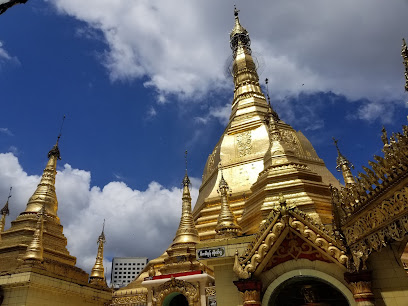
The Secretariat Yangon
Explore the rich historical tapestry and stunning architecture of The Secretariat Yangon, a must-visit heritage site in Myanmar's capital.

Maha Bandula Park
Discover the serene beauty of Maha Bandula Park, a vibrant urban oasis in Yangon offering stunning views of Sule Pagoda and a glimpse into local life.

Chinatown
Discover the vibrant streets of Chinatown in Yangon, a cultural and culinary treasure trove that delights every visitor with its rich heritage.
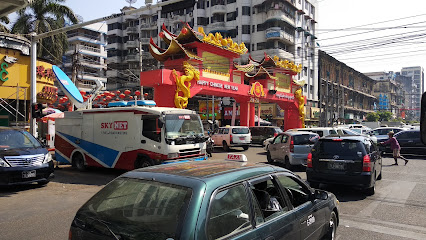
Pansodan Gallery
Explore the vibrant contemporary art scene at Pansodan Gallery in Yangon, where local and international artists showcase their creative expressions.

Yangon Heritage Trust
Explore the architectural wonders and cultural heritage of Yangon at the Yangon Heritage Trust, where history meets vibrant local life.
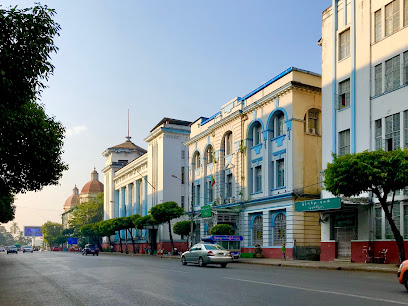
Statues of Yali
Explore the stunning Statues of Yali in Yangon, where art and culture converge to narrate Myanmar's rich history through magnificent sculptures.
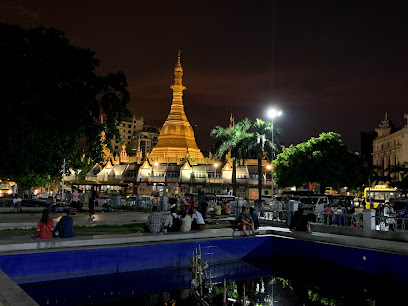
Tourist Attraction Site
Discover the serene beauty of Bandoola Park in Yangon, a perfect blend of nature and culture in Myanmar's vibrant capital.
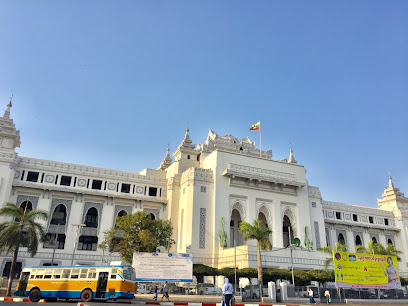
YGN Downtown Overpass View Point
Discover stunning panoramic views of Yangon at the YGN Downtown Overpass View Point, a perfect blend of culture and city life.

Yangon City Hall View Point
Experience the stunning views and vibrant culture at Yangon City Hall View Point, a must-see attraction in Myanmar's largest city.

ရွှေဂုံတိုင်လမ်းဆုံ
Discover the awe-inspiring Shwedagon Pagoda, a cornerstone of Myanmar's spirituality and cultural heritage in the heart of Yangon.
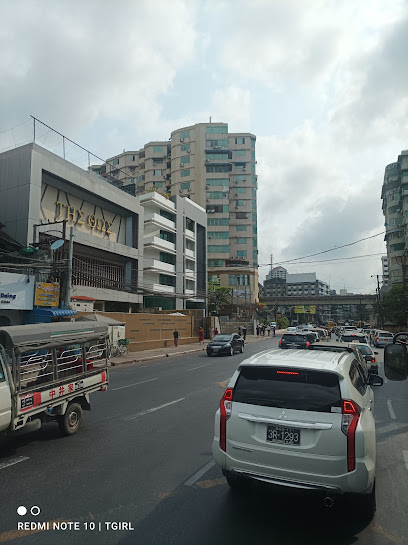
Battle of Kohima Monument
Explore the Battle of Kohima Monument in Yangon, a historical landmark that honors the bravery of WWII soldiers and reflects on Myanmar's rich history.
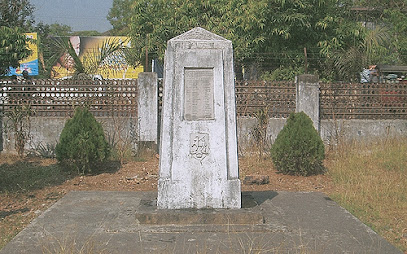
Unmissable attractions to see
U Thant House
Discover the legacy of U Thant at U Thant House, a cultural museum in Yangon showcasing Myanmar's diplomatic history and rich heritage.
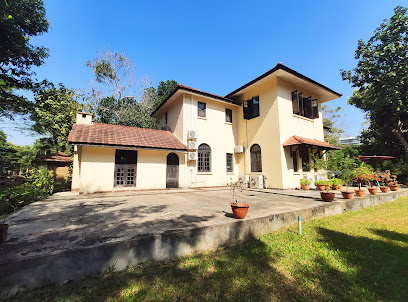
Taw Win Art Gallery
Explore contemporary Burmese art at Taw Win Art Gallery in Yangon, a vibrant hub of creativity nestled within the Bogyoke Aung San Market.
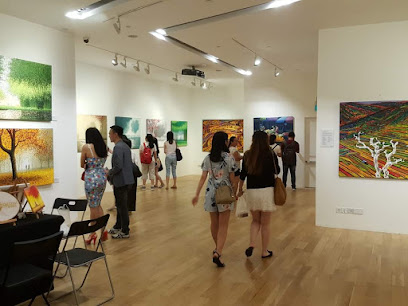
Tourist Attraction Site
Experience the vibrant culture and local life at Bandoola Park Bus Terminus, a must-visit hub in the heart of Yangon.
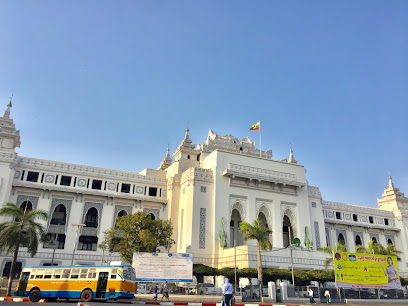
YGN Downtown Overpass View Point
Discover stunning panoramic views of Yangon from the YGN Downtown Overpass View Point, a perfect blend of urban vibrancy and cultural essence.
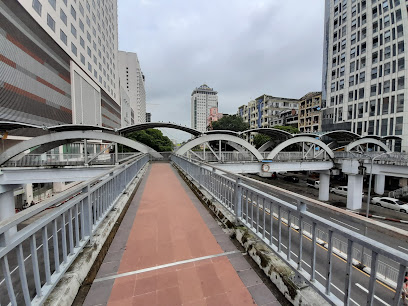
Essential places to dine
999 Shan Noodle House
Discover authentic Burmese flavors at 999 Shan Noodle House in Yangon - where every bowl tells a story.
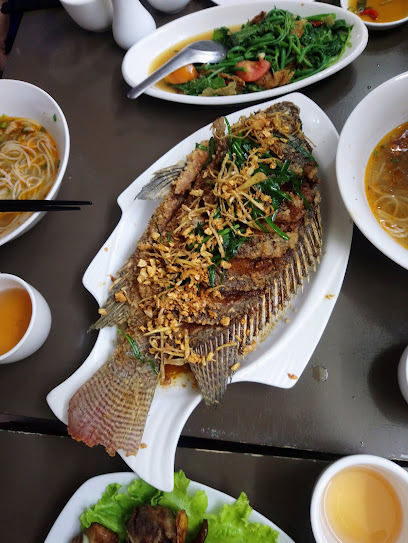
Signature
Experience the finest Asian cuisine at Signature in Yangon – where delicious dumplings meet elegant dining.

Ô'Thentic Brasserie
Discover the unique culinary fusion at Ô'Thentic Brasserie in Yangon, where local traditions meet modern flavors in an inviting atmosphere.

Burma Bistro
Experience authentic Burmese cuisine at Burma Bistro in Yangon - where tradition meets modern dining in a cozy atmosphere.

Shan Yoe Yar
Experience authentic Shan cuisine at Shan Yoe Yar in Yangon – where every dish tells a story of Myanmar's rich culinary heritage.

Shwe Kan Kaw ( Pan Soe Dan Road )
Discover authentic Burmese cuisine at Shwe Kan Kaw in Yangon - a culinary experience that delights every taste bud.
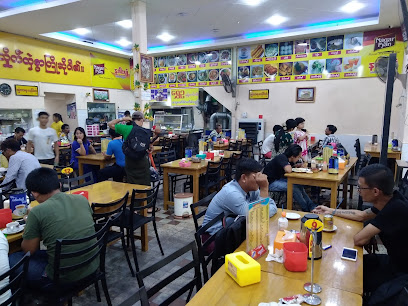
9 Bar
Experience the perfect blend of succulent steaks and artisanal coffee at 9 Bar in Yangon – where culinary excellence meets warm hospitality.
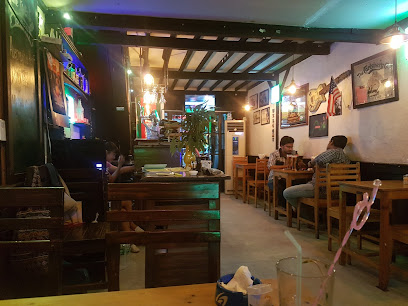
Super Wonder Bowl
Experience the authentic flavors of Myanmar at Super Wonder Bowl, where every dish tells a story of tradition and passion.
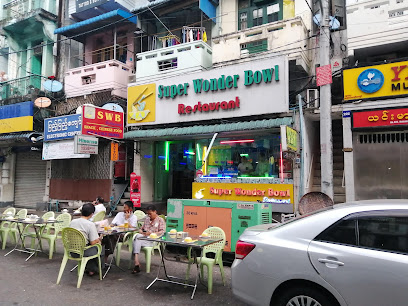
HANABI Japanese Restaurant(Yangon)
Discover authentic Japanese cuisine at HANABI Restaurant in Yangon – where tradition meets flavor in every dish.

မိတ်ဆက် ဆီချက်
Experience authentic Burmese cuisine at မိတ်ဆက် ဆီချက် in Yangon, where every dish offers a taste of Myanmar's rich culinary heritage.
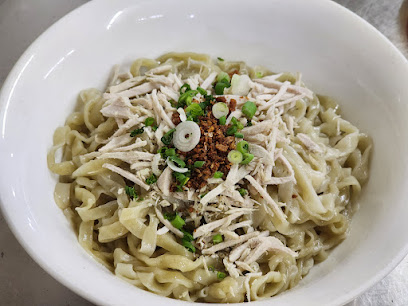
Markets, malls and hidden boutiques
UNiQUE (Pansodan)
Explore cutting-edge technology at UNiQUE (Pansodan), Yangon’s go-to destination for the latest smartphones and accessories.
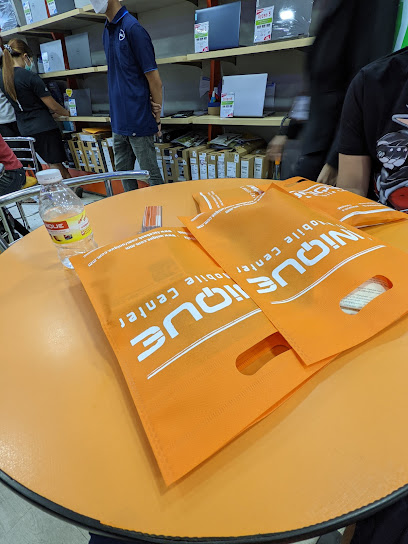
Yangoods Shan Gone Boutique
Explore the heart of Myanmar's artistry at Yangoods Shan Gone Boutique, where unique gifts and fashion accessories await every traveler.

Myanhouse Local Made ( Myanmar May )
Explore Myanhouse Local Made in Yangon for authentic Myanmar souvenirs and handcrafted treasures that embody the spirit of local craftsmanship.
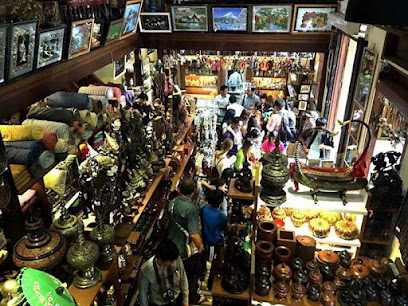
Akan Art Center
Explore the vibrant local art scene at Akan Art Center in Yangon, showcasing unique creations and cultural expressions from talented Burmese artists.
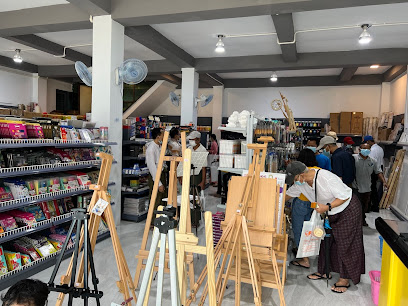
Yar Pyae Bookshop
Explore the literary charm of Yar Pyae Bookshop in Yangon, where books and culture come together in a cozy atmosphere.

Chin Chili
Explore Chin Chili in Yangon: A vibrant gift shop offering unique bags and souvenirs that encapsulate the essence of Myanmar’s rich culture.
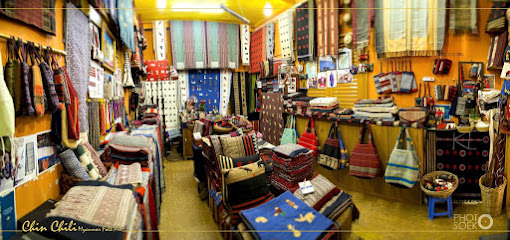
Parami Maw & Co.
Explore unique bags, jewelry, and souvenirs at Parami Maw & Co., a must-visit gift shop in Yangon’s vibrant Bogyoke Aung San Market.

V A R I O U S - Myanmar
Discover the essence of Myanmar's fashion at V A R I O U S, where unique women's clothing meets cultural elegance.

ရှိန်း
Discover authentic Myanmar crafts at Shain Souvenir Store in Yangon - a treasure trove of tailored gifts and unique souvenirs.

Luvvie
Explore the heart of Myanmar through Luvvie Gift Shop's unique collection of handcrafted souvenirs and gifts.

Essential bars & hidden hideouts
7th Joint Bar & Grill
Discover the vibrant nightlife at 7th Joint Bar & Grill in Yangon, where delicious food, refreshing drinks, and live music create unforgettable experiences.
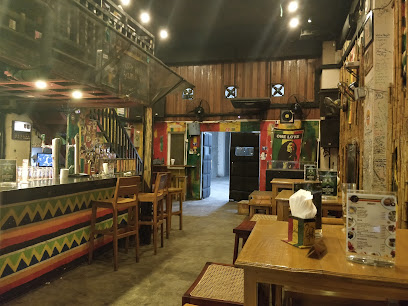
Union Bar & Grill
Experience the vibrant flavors of Yangon at Union Bar & Grill, where exceptional grilled dishes meet a lively bar atmosphere.
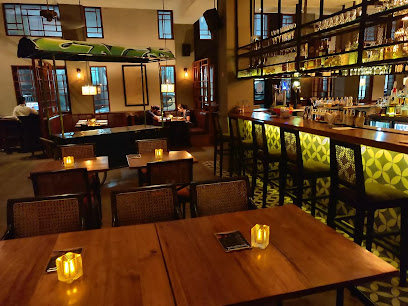
Yangon Yangon Rooftop Bar
Unwind at Yangon Yangon Rooftop Bar, where breathtaking views and delightful cocktails create an unforgettable experience in the heart of Myanmar's capital.
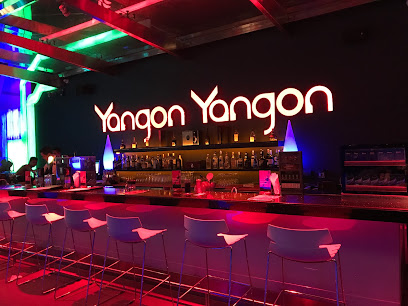
Kosan Bar 19th Street
Discover the vibrant nightlife at Kosan Bar 19th Street, where refreshing drinks and a lively atmosphere await in the heart of Yangon.
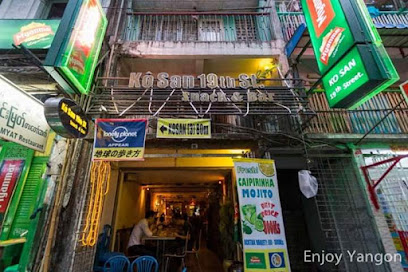
Blind Tiger
Discover the vibrant nightlife of Yangon at Blind Tiger, where expertly crafted cocktails and a cozy atmosphere await.
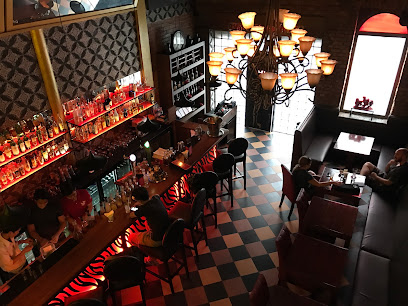
SkyLine Bar & Restaurant
Experience exquisite dining and stunning views at SkyLine Bar & Restaurant in Yangon, a perfect blend of culinary delight and breathtaking scenery.

GREAT GARDEN BAR
Unwind at the Great Garden Bar, Yangon’s rooftop cocktail haven offering stunning skyline views and a delicious drink menu.
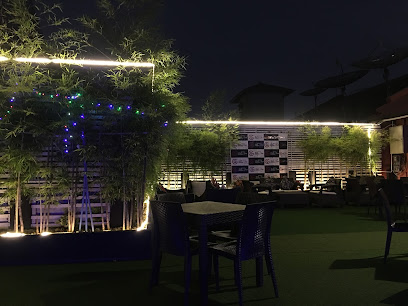
Cocky Bar
Experience the vibrant nightlife of Yangon at Cocky Bar, a lively destination offering a wide range of drinks and a friendly atmosphere.

HiSo Heaven
Discover the vibrant nightlife at HiSo Heaven, Yangon’s trendy bar with an inviting atmosphere and a diverse drink menu.

Down Town Bar & Grill
Discover the lively Down Town Bar & Grill in Yangon, where delicious food and a vibrant atmosphere await every visitor.
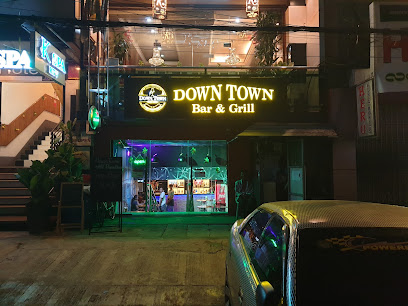
Local Phrases
-
- Helloမင်္ဂလာပါ
[mingalarpar] - Goodbyeသွားပါ
[swarpar] - Yesဟုတ်ကဲ့
[hutke] - Noမဟုတ်ဘူး
[ma hut bu] - Please/You're welcomeကျေးဇူးတင်ပါသည်
[kyay zu tin par sa ne] - Thank youကျေးဇူးတင်ပါသည်
[kyay zu tin par sa ne] - Excuse me/Sorryဂျာန်းရေးပါ
[janyei ba] - How are you?ဘယ်လို့ယူလို့
[ba lei yu lei] - Fine. And you?ကျိန်းမှာပါ။ နင့်ဘူး။
[kin ma par, nang bu] - Do you speak English?အင်္ဂလိပ်လို့ယူလို့
[ingale pyu yu lei] - I don't understandကျွန်တော်ကိုသွားလား
[kwun tau ko swar lar]
- Helloမင်္ဂလာပါ
-
- I'd like to see the menu, pleaseမီနွာရှည့်မှာကိုသွားလား
[menu shan ma htar lar] - I don't eat meatမြန်မာဖက်ကိုမပြည့်ပါ
[myanmar hpet ko ma pyin ba] - Cheers!စစ်ဖွဲ့!
[saung phwe] - I would like to pay, pleaseငွေတင်ပါတယ်
[ngwe tin par tai]
- I'd like to see the menu, pleaseမီနွာရှည့်မှာကိုသွားလား
-
- Help!ကူး!
[ku] - Go away!လွန်းပါ
[lwan par] - Call the Police!ရဲရင်အော်ပါသည်
[yayin aou par sa ne] - Call a doctor!အဆင့်မယ့်ဆရာဝန်
[a shin me shar wan] - I'm lostသွားတတ်လား
[swar ta lar] - I'm illပြည့်တာလား
[pyin ta lar]
- Help!ကူး!
-
- I'd like to buy...ဝယ်ယူအောင်မှာကိုသွားလား
[wai yu aung ma htar lar] - I'm just lookingကိုယ်စရာလူး
[ko sa ra lu] - How much is it?ဘယ်ဘက်ကြီးလဲ
[ba hka gri la] - That's too expensiveအရမ်းအတွေးပါနေ
[ya ma htaw par ne] - Can you lower the price?စျေးမြန့်ပါလို့
[se myan ba lu]
- I'd like to buy...ဝယ်ယူအောင်မှာကိုသွားလား
-
- What time is it?ဘယ်နာရီတယ်
[ba na ri tai] - It's one o'clockတစ်တားနာရီပါ
[ta ta nar par] - Half past (10)တစ်စက္ကို
[ta sak ko] - Morningမနက်
[ma nek] - Afternoonနေ့လွန်
[ne lwan] - Eveningညနေ
[nya ne] - Yesterdayမနေ့
[ma ne] - Todayယနေ့
[ya ne] - Tomorrowမနက်က
[ma ne ka] - 1တစ်
[ta] - 2နှစ်
[hne] - 3သုံး
[sohn] - 4လေး
[lei] - 5ငါး
[nga] - 6ခြောက်
[hkyauk] - 7ခုန်
[khun] - 8ရှစ်
[ha hne] - 9ကိုး
[ko] - 10ဆယ်
[sa]
- What time is it?ဘယ်နာရီတယ်
-
- Where's a/the...?အဲလိုမယ်...
[e lei ma yar] - What's the address?လိပ်စာတယ်ဆိုတယ်
[le sa tai so tai] - Can you show me (on the map)?မြောက်ကုန်စဉ်လို့သွားလား
[myauk kun shan lu swar lar] - When's the next (bus)?နောက်စရာရိသောကြီးလဲ
[ne ka sa ra sei gri la] - A ticket (to ....)လက်ဆင်းကြီး (သို့မဟုတ်)
[lak shin gri (soh ma hut)]
- Where's a/the...?အဲလိုမယ်...
History of Downtown Yangon
-
Downtown Yangon, originally known as Rangoon, was established by the British in the 19th century, becoming the capital of British Burma in 1885. The colonial architecture, characterized by grand buildings such as the City Hall and the High Court, reflects the British influence during this period. This era marked the beginning of significant urban development and the establishment of Yangon as a commercial hub in Southeast Asia.
-
During World War II, Downtown Yangon was a critical battleground between Allied and Japanese forces. The city suffered extensive damage, and the local population faced hardships during the occupation. Post-war reconstruction efforts led to changes in urban planning and architecture, as the city sought to rebuild and modernize while retaining elements of its historical character.
-
The 1940s and 1950s were pivotal in Downtown Yangon's history, as it became a center for the independence movement against British colonial rule. The streets were filled with political fervor, leading to Burma's independence in 1948. Prominent figures, such as Aung San, rallied support in this neighborhood, which continues to resonate with the spirit of activism and change.
-
Following the military coup in 1962, Downtown Yangon experienced economic decline and isolation from the international community. Nationalization of businesses and strict regulations led to a stagnation of urban development, and many historic buildings fell into disrepair. This period saw a significant shift in the cultural landscape as traditional practices and local businesses struggled to survive.
-
In recent years, Downtown Yangon has seen a resurgence in cultural and economic activity. The government and private investors have initiated projects to restore colonial-era buildings and improve infrastructure. This revival has attracted tourists and expatriates, leading to a vibrant arts scene, bustling markets, and a renewed interest in Yangon's diverse cultural heritage. The neighborhood plays a crucial role in Myanmar's ongoing transition towards democracy and openness.
Downtown Yangon Essentials
-
Downtown Yangon is accessible from various neighborhoods via public transport and taxis. The most common way to reach Downtown is by taking a taxi, which can be hailed on the street or booked through ride-hailing apps like Grab. The Yangon Circular Train also connects Downtown with other parts of the city and offers an affordable and scenic way to travel. Buses are available, but the routes can be confusing for non-locals, so using a taxi or train is recommended for convenience.
-
Downtown Yangon is best explored on foot, as many attractions are within walking distance of each other. The city also has a public bus system, but routes can be challenging for tourists. The Yangon Circular Train is a popular option for longer distances, providing a unique perspective on the city. For a local experience, consider renting a bicycle to navigate through the streets, although be cautious of traffic conditions.
-
Downtown Yangon is generally safe for tourists, but it's essential to remain vigilant, especially in crowded areas. Pickpocketing can occur, particularly near popular tourist attractions like Shwedagon Pagoda and Bogyoke Aung San Market. It's advisable to avoid walking alone at night in less populated areas. Areas such as Chinatown may have higher instances of petty crime, so exercise caution and keep belongings secure.
-
In case of emergency, dial 199 for police assistance or 192 for ambulance services in Myanmar. Familiarize yourself with the location of the nearest hospital or clinic in Downtown Yangon, such as Yangon General Hospital. It’s important to have travel insurance that includes medical coverage. For minor health issues, pharmacies are available throughout the area for over-the-counter medications.
-
Fashion: Do dress modestly, especially when visiting religious sites; avoid shorts and sleeveless tops. Religion: Do respect local customs, such as removing shoes when entering temples. Public Transport: Do offer your seat to elderly passengers; don't eat or drink on public transport. Greetings: Do greet with a traditional 'Mingalaba' and a smile; don't use overly casual gestures. Eating & Drinking: Do try local dishes and accept food offers; don't waste food or refuse hospitality, as it's considered rude.
-
To experience Downtown Yangon like a local, visit street food stalls for authentic Burmese cuisine and explore local markets, such as the Scott Market (Bogyoke Aung San Market) for unique crafts and souvenirs. Engage with local vendors and residents, as they are often welcoming and eager to share stories. If you have time, enjoy a sunset at the Shwedagon Pagoda, as it is a breathtaking experience. Consider taking a guided walking tour to learn more about the city's history and culture.
Nearby Cities to Downtown Yangon
-
Things To Do in Kyaiktiyo
-
Things To Do in Hpa-An
-
Things To Do in Pyay
-
Things To Do in Ngapali
-
Things To Do in Mae Hong Son
-
Things To Do in Naypyidaw
-
Things To Do in Chiang Mai
-
Things To Do in Pai
-
Things To Do in Sukhothai
-
Things To Do in Kalaw
-
Things To Do in Inle Lake
-
Things To Do in Kanchanaburi
-
Things To Do in Bagan
-
Things To Do in Sittwe
-
Things To Do in Chiang Rai



